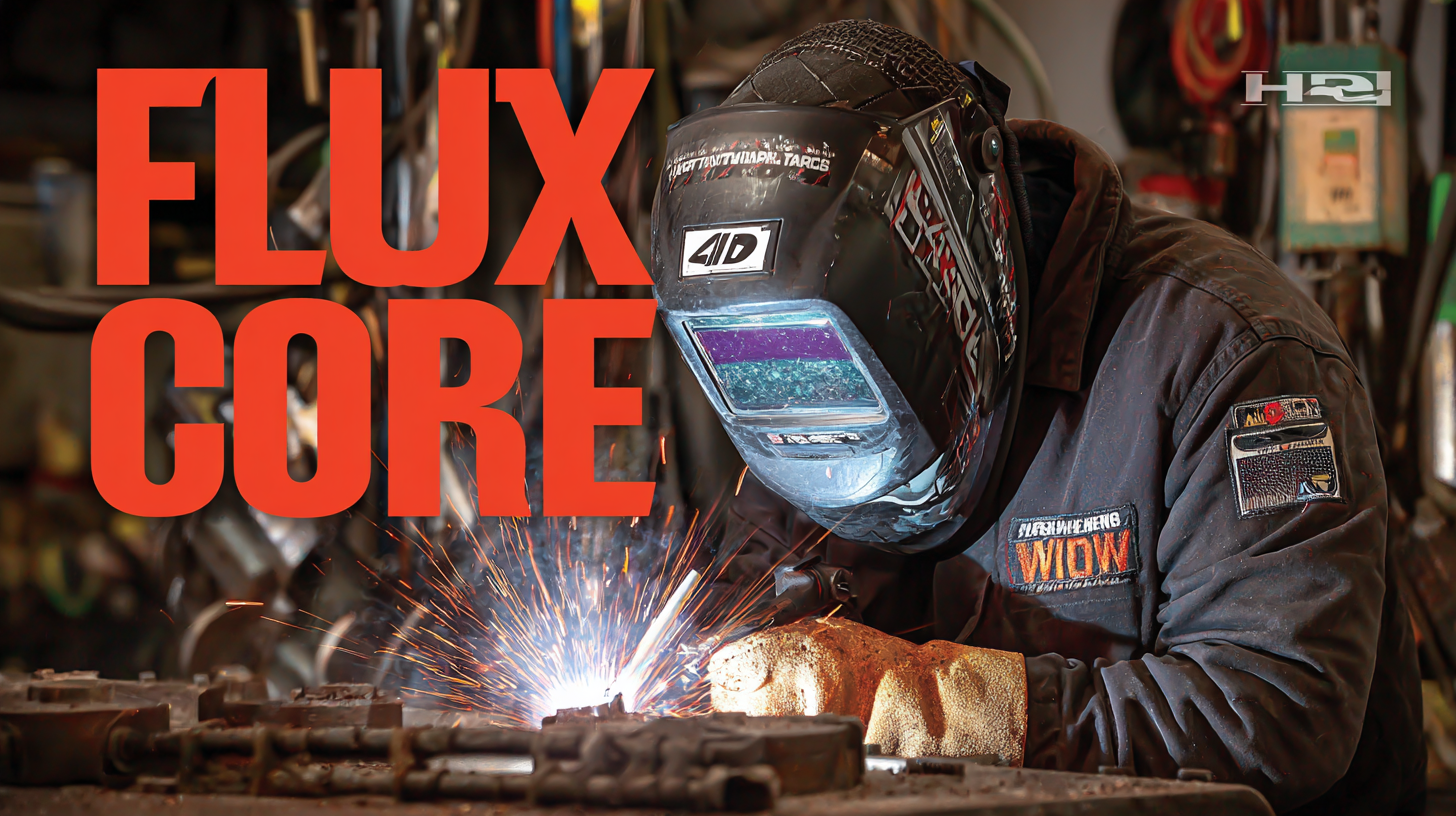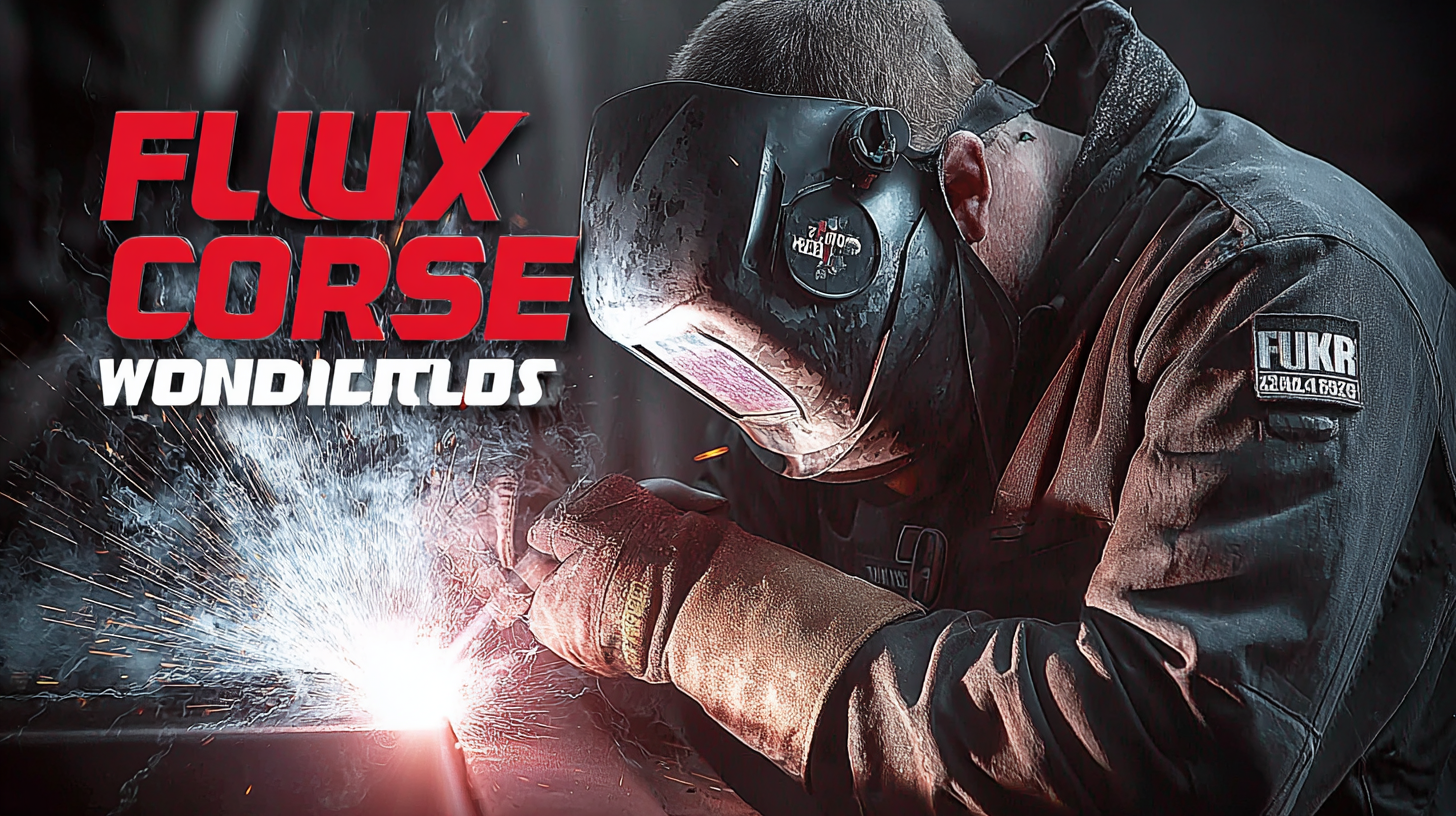In the fast-paced industrial landscape, the importance of reliable welding techniques cannot be overstated, particularly when it comes to the use of a Flux Core Welder. According to the American Welding Society, nearly 40% of welding tasks in various sectors are performed using flux-cored arc welding due to its efficiency and versatility in different environments. Despite its advantages, users often encounter common challenges that can hinder performance, including issues related to wire feeding, insufficient penetration, and spatter control. This blog aims to delve into these prevalent issues faced by professionals using Flux Core Welders in industrial applications and to provide insightful strategies for overcoming them. Understanding these complexities is crucial for welders to enhance their productivity and ensure the highest quality outcomes in their projects.

 Flux core welding, a favored technique in industrial applications, presents several common challenges that professionals must navigate. One of the primary issues faced during this process is the inconsistency in weld quality, often caused by variations in the welding parameters, including voltage, wire speed, and travel speed. Industrial environments frequently require quick turnarounds, which can exacerbate these inconsistencies, leading to potential failures in structural integrity and necessitating costly repairs.
Flux core welding, a favored technique in industrial applications, presents several common challenges that professionals must navigate. One of the primary issues faced during this process is the inconsistency in weld quality, often caused by variations in the welding parameters, including voltage, wire speed, and travel speed. Industrial environments frequently require quick turnarounds, which can exacerbate these inconsistencies, leading to potential failures in structural integrity and necessitating costly repairs.
Moreover, the complexity of joint configurations can pose further difficulties. Flux core welding is often employed in challenging positions such as overhead or vertical joints, which require skill and precision. Inadequate training or inadequate understanding of the material and its properties can result in inadequate penetration or excessive spatter, hindering the efficiency of the welding operation. As industries evolve towards increased automation and advanced technologies to enhance productivity, the need for well-trained personnel who can adeptly handle these challenges becomes ever more critical. As such, continuous professional development and training for welders are essential to meet the demands of modern industrial applications.
In the realm of industrial applications, the performance of flux core welders is critical, and several factors significantly influence their effectiveness. One of the primary elements is the type of shielding gas used. According to the American Welding Society (AWS), the choice between CO2 and mixed gases can impact not only the weld quality but also the penetration and bead appearance. For instance, CO2 offers deeper penetration but at the expense of increased spatter, while mixed gases provide a cleaner weld with fewer defects, which are essential in industries requiring high standards of weld integrity, such as aerospace and automotive.
Another key factor is the welder's feed rate and voltage settings. A report from the Fabricators and Manufacturers Association (FMA) highlighted that optimizing these parameters can lead to a reduction in defects by as much as 30%. Additionally, the wire composition plays a pivotal role; using ER70S-6 wire has been shown to improve tensile strength and impact resistance, which are vital for applications in harsh conditions. Proper training and understanding of these variables can significantly enhance the performance of flux core welders, ensuring reliability and efficiency in high-demand industrial settings.
When selecting the right flux core welder for your needs, there are several key factors to consider. First, assess the type of materials you will be working with. Different welders are suited for various metals, from stainless steel to mild steel and aluminum. Choose a welder that offers the appropriate voltage and amperage settings to accommodate the thickness of the material, ensuring a strong and effective weld. Additionally, consider whether you require a gas-shielded or self-shielded flux core welder, as this will impact the quality of the weld and the applications for which the welder can be effectively used.

Another vital aspect to consider is portability and power supply. If you plan to work on-site or in different locations, a lightweight and easily transportable model with access to a standard power outlet can be advantageous. Furthermore, investigate the built-in features such as adjustable wire feed speed, duty cycle, and the availability of different nozzle sizes. These features can enhance your welding experience, providing convenience and versatility. Ultimately, by evaluating your specific welding tasks and preferred features, you can make an informed decision and select the best flux core welder that meets your industrial application needs.
Maintaining flux core welders is crucial for ensuring their longevity and optimal performance in industrial applications. Regular inspection of the welder’s components, such as the contact tips and nozzles, can help identify wear and tear before it leads to significant issues. Cleaning these parts regularly prevents contamination and ensures a smooth welding process, ultimately extending the life of the equipment. Moreover, keeping the welding cable free from damage and ensuring proper connections can prevent electrical problems that may arise from corrosion or wear.
Another essential maintenance practice is to monitor and adjust the shielding gas flow rate when necessary. While flux core welding often uses a self-shielding wire, maintaining optimal conditions can enhance results. Additionally, routine checks on the wire feeder system can prevent feed issues that could lead to inconsistent welds. By creating a preventative maintenance schedule, operators can systematically address potential issues and keep their flux core welders in excellent working condition, securing their investment and maximizing productivity in the workplace.
| Issue | Impact on Equipment | Recommended Maintenance Practice | Frequency of Maintenance |
|---|---|---|---|
| Insufficient Cleaning | Increased wear and tear | Regular cleaning with appropriate solvents | Weekly |
| Overheating | Reduced lifespan of components | Monitor thermal levels; cool down after use | Daily |
| Wire Feed Issues | Inconsistent weld quality | Regular inspection and calibration | Monthly |
| Arc Stability Problems | Poor welding performance | Check gas supply and settings | Before each use |
| Electrical Connections Failure | Potential equipment damage | Regularly tighten and inspect connections | Monthly |
Flux core welding is an effective technique frequently used in industrial applications, but it often presents various challenges. One common issue is the generation of excessive slag, which can lead to poor weld quality. To overcome this, ensure that you are using the right type of flux core wire for your specific project. Selecting a wire with minimal slag production can significantly enhance the quality of your welds.
Another frequent challenge is porosity, which occurs when gas gets trapped in the weld. This can often result from improper setup or environmental factors. A useful tip is to always check the shielding gas and ensure that your working area is free of contamination, such as rust or oil. Additionally, maintaining a consistent welding speed can help produce cleaner seams and reduce the likelihood of porosity.
Finally, maintaining proper arc length is crucial. Too short or too long an arc can lead to various defects. A practical suggestion is to practice consistent control by adjusting your welding technique as you work. By focusing on these aspects, welders can improve their results and tackle the common issues associated with flux core welding more effectively.
